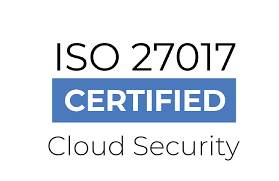NIST CLOUD REFERENCE ARCHITECTURE

What is NIST Cloud Reference Architecture?
The NIST Cloud Reference Architecture (RA), documented in Special Publication 500-292, is a high-level conceptual model describing the components and interactions involved in cloud computing. It focuses on the “what” of cloud services, not the “how” of implementation.
Importance of NIST Cloud Reference Architecture?
- Standardized Terminology: Improves communication and understanding across different cloud implementations.
- Transparency and Clarity: Helps demystify complex cloud systems and their operation.
- Architecture Design Guidance: Provides a foundation for developing secure and efficient cloud solutions.
- Compliance Support: Aligns with various security and compliance frameworks.


Importance of NIST Cloud Reference Architecture?
- Standardized Terminology: Improves communication and understanding across different cloud implementations.
- Transparency and Clarity: Helps demystify complex cloud systems and their operation.
- Architecture Design Guidance: Provides a foundation for developing secure and efficient cloud solutions.
- Compliance Support: Aligns with various security and compliance frameworks.
Our Approach
1. Define Scope and Goals
- Identifying your Organization's Cloud Computing Needs: What problems are you trying to solve? What services do you need?
- Defining your Target Audience: Who will be using the cloud resources? What are their technical skills and needs?
- Setting Clear Goals and Objectives: What do you want to achieve with your cloud implementation? (e.g., improved agility, cost reduction)
2. Selecting the Cloud Service Model and Deployment Model
- Selecting the relevant CRA (IaaS, PaaS, SaaS) and deployment models (Public, Private, Hybrid) that best align with your needs and requirements, considering factors like security, control, and flexibility.
3. Identifying Actors and Activities
- Applying the CRA's stakeholder model to identify relevant actors in your cloud implementation (e.g., provider, consumer, broker).
- Mapping the activities involved in your cloud journey (e.g., service provisioning, management, usage) to the CRA's functional categories.
4. Designing and Implementing
- Utilizing the CRA as a reference point to design your cloud architecture, ensuring alignment with its principles.
- Considering security, compliance, scalability, and other relevant factors during the design and implementation process.
5. Monitoring and Optimization
- Continuously monitoring your cloud implementation for performance, security, and cost efficiency.
- Leveraging the CRA's principles to identify areas for improvement and optimize your cloud usage.
- Staying updated on the evolving cloud landscape and consider revisions to your architecture when necessary.








